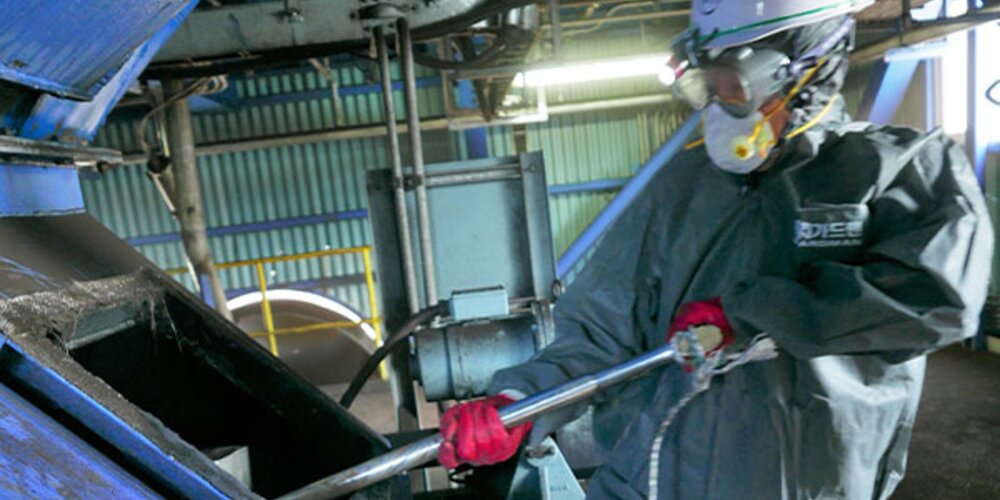Browse our services
Explore how Brookes Bell can help you
Find an expert
Meet our team, find and expert and connect
Contact us
Get in touch, we're here to help

Whenever a cargo is carried by sea it must meet different quality parameters which are usually set out in a sales contract or national standard. Some of these parameters are specified to meet the regulatory requirements for food and feed safety, whilst others are specified by the buyer to ensure it is suitable for the specific intended use. Whether a cargo meets its quality parameters can be confirmed through laboratory analysis.
As a result, sampling and analysis is an integral part of my job and any investigation. Typically, I will be appointed by the shipowner, charterer or more often their P&I Club to investigate the cause of alleged damage to the cargo. Often, sampling the cargo, whether it is grain, chemicals, or a group A cargo, it is necessary to check whether it meets the required specification. Sample taking and analysis is also critical when investigating the causes of a fire or explosion and identifying chemical contaminants.
My background is in chemistry, part of which involves using a whole host of different analytical techniques to check that the purity and composition of the final product. At Brookes Bell, I’m applying similar concepts, but sometimes in reverse for situations like analysing a residue from an explosion or reaction, to find out what the starting material could have been. Analysing samples taken from the scene of an investigation is complicated by the presence of so many other compounds rather than analysing a (hopefully) single product from a laboratory synthesis.
For samples of unknown compounds, such as in the case of contamination or an explosion, the kinds of analysis chosen will depend on which technique provides the most relevant and insightful information. If I was working in the laboratory as a student again, I might do 6-7 analyses on just one sample, each one would reveal something different, but realistically the client is not going to want to be charged for too many different tests, so it’s down to our specialist knowledge and experience to identify which techniques are most relevant for each scenario.
Spot sampling vs. representative sampling
When a vessel arrives in port, the cargo is usually checked by customs. During their inspection, they often take spot samples just from the surface, the most accessible parts of the cargo. They will check the cargo quality against the cargo specification and discharge will proceed smoothly or not, based on their findings. The problem is, they have only taken spot samples – which are exactly that, from various spots on the cargo surface. These spot samples are not representative of the whole shipment, which might be 5-7 holds full of the same cargo.
Similarly, sometimes the cargo is segregated during discharge, so the sound cargo is separated from the allegedly damaged cargo. In some instances, parties may agree for samples to be taken just for the allegedly damaged cargo, without sampling the sound cargo and finding out the quality of the cargo as a whole. This often results in an unnecessary claim for the allegedly damaged portion of what is otherwise a normal cargo. Our recommendation is to conduct representative testing of the entire shipment, which gives a much better picture of the extent of the damage quality of the entire shipment.
Whilst generally, taking representative samples provides more useful information on the quality of the cargo, there can be instances when taking spot samples is preferable. For example, in situations where seawater ingress may have occurred, it makes sense to take spot samples of the suspected affected areas. Taking representative samples in this instance would not be very informative as the proportions of allegedly wetted cargo within the representative sample would be tiny, meaning that any useful information from the alleged wetted cargo will be ‘drowned out’. It is important to understand what sampling will achieve before doing so, and this is something that we can assist with.
What does the laboratory analysis show?
A common misconception is that the analysis results will provide information on the cause the damage. Laboratory analyses gives quantitative results on the quality aspects of the cargo such as the moisture content, the percentage of broken kernels and heat damaged kernels etc.; these can be compared to load port analyses and quality certificates. It is the pattern of damage that is key to ascertain the cause.
Ideally, we would attend onboard to monitor how the situation develops and collect evidence. Taking photographs throughout the discharge, especially of the pattern of damage is critical, indeed we only have one shot to capture all the evidence during discharge. It is important that photographs taken put the damage in context; in some instances, when we have not attended in person, the photographs can be difficult to interpret or in the worst case, little to no photographs were taken during discharge!
By combining the results of our sample analysis and observing the pattern of damage, we can draw conclusions on the cause and extent of damage and advise our clients accordingly.